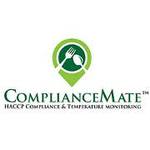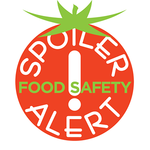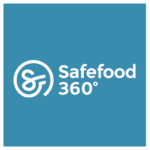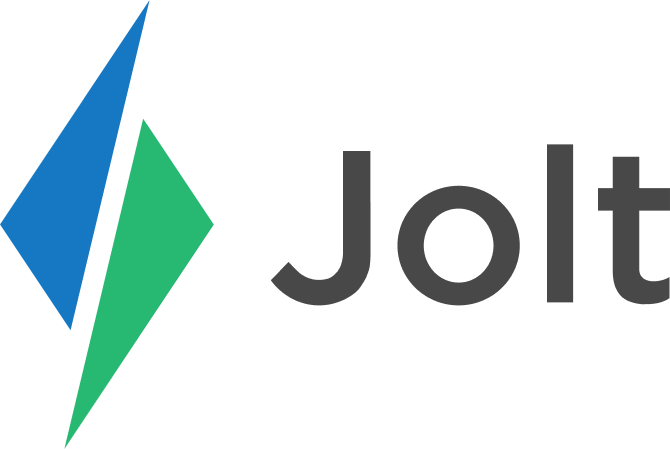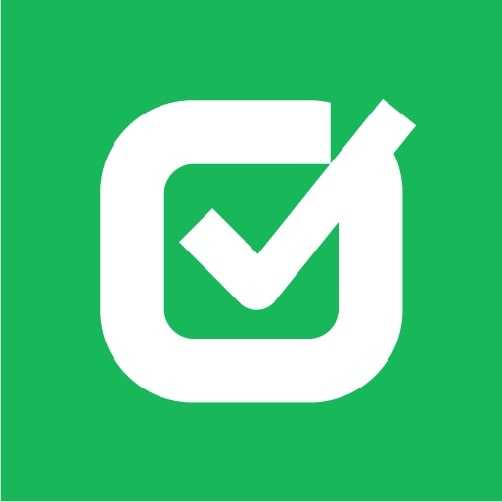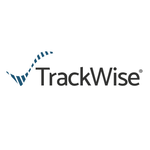What Is Food Safety Software?
A technology solution called food safety software was created to assist food firms in guaranteeing the quality and safety of their goods. It is a complete system that automates and simplifies a number of food safety-related operations, including supplier information management, ingredient tracking and management, and regulatory compliance. Real-time monitoring, data analysis, and risk assessment are among the functions that the program offers to assist firms in spotting any problems and implementing solutions.
Additionally, it allows them to monitor and trace goods from sourcing to delivery, guaranteeing complete accountability and transparency. The capacity of food safety software to digitize and centralize important data, making it easily accessible and arranged for enterprises, is one of its main advantages. Manual documentation, which can be laborious and prone to human error, is no longer necessary as a result.
Additionally, food safety software enables companies to configure notifications and alerts for critical activities, including approaching audits or ingredient expiration dates, guaranteeing prompt response. Additionally, it gives users access to historical data for trend analysis and ongoing process development. Purchasing food safety software enhances overall productivity and efficiency while also assisting companies in maintaining regulatory compliance.
This technology greatly lowers the chance of foodborne illnesses and recalls, protecting the brand's confidence and reputation. All things considered, food safety software is a useful resource for companies in the food industry trying to guarantee the quality and safety of their goods, optimize workflows, and stay in compliance with laws. Businesses may lower expenses, increase operational efficiency, and—above all—protect the health and safety of their clients by investing in this technology.
What Are The Recent Trends In Food Safety Software?
All food businesses place a high premium on food safety, and as industry standards and laws change, it is now essential for firms to have effective and dependable food safety procedures in place. The emergence of food safety software, a potent instrument that aids companies in overseeing and controlling their food safety procedures, is the result of this. The market for food safety software has grown significantly in recent years, and as technology advances, there are a number of new trends that consumers should be aware of before making an investment in food safety software.
1. Integration With Other Systems: Integrating food safety software with other systems, such enterprise resource planning (ERP) and quality management systems (QMS), is one of the latest trends in this field. Businesses can use data from other systems to enhance their food safety procedures and make better decisions thanks to this connectivity.
2. Mobile-Based Applications: Many food safety software solutions have created mobile-based applications for on-the-go use in response to the growing popularity of smartphones. These apps make it simpler for companies to maintain compliance by enabling users to access and submit data, conduct inspections, and monitor food safety procedures from any location.
3. Real-Time Monitoring: Food safety software can now track temperature, humidity, and other critical parameters in real-time thanks to sensors and Internet of Things (IoT) technology. This eliminates any possible risks to food safety by allowing companies to identify problems quickly and take appropriate action.
4. Predictive Analytics: Using predictive analytics in software for food safety is another new trend. This technology looks for trends and forecasts possible threats to food safety using data and algorithms. This enables companies to take proactive measures to resolve problems and stop food safety disasters before they happen.
5. Blockchain Technology: Because it offers a transparent and safe method of tracking food from farm to plate, blockchain technology is becoming more and more well-liked in the food safety sector. Through the creation of an unchangeable record of every transaction along the supply chain, food safety software connected with blockchain can increase food safety and traceability.
Benefits Of Using Food Safety Software
A crucial component of any food business is food safety, which guarantees the caliber and safety of the food items produced and marketed. Manual food safety procedures can be time-consuming, prone to errors, and expensive for enterprises due to the continuously shifting rules and requirements. Food safety software can help with this, offering a complete solution to automate and streamline food safety administration.
Here are a few advantages of implementing food safety software in your company.
1. Adherence To The rules: Businesses may maintain compliance with the constantly evolving standards and regulations in the food industry by using food safety software. It lowers the chance of non-compliance and associated fines by ensuring that all relevant processes and procedures are being followed.
2. Better Food: Quality and Safety From raw materials to the finished product, food safety software enables organizations to monitor and document every facet of food safety. This ensures the safety and quality of food items by assisting in the identification of any problems and enabling prompt remedial action.
3. Financial Savings: Businesses can save time and money by automating food safety procedures that were previously done by hand. Businesses are able to concentrate on other areas of their operations as a result of the cost savings and enhanced efficiency that this produces.
4. Monitoring And Reporting: Real Time Real-time monitoring and reporting features offered by food safety software enable companies to keep tabs on all food safety operations and promptly spot any possible problems. This makes it possible for companies to act quickly, lowering the possibility of food recalls and maintaining customer confidence.
5. Better Traceability: The capacity to track down and pinpoint the cause of a food safety concern is essential to containing and fixing it. Food safety software makes it easy to identify the source of any contamination by enabling full traceability of all materials and activities.
6. Improved Risk: Control Food safety software's extensive tracking and reporting features assist companies in identifying and reducing possible dangers. This makes it possible to take preventative action, guaranteeing that food safety procedures are always current and compliant with laws.
7. Simplified Examinations: Although audits are a crucial part of managing food safety, they may be stressful and time-consuming for companies. Because all paperwork, data, and procedures are kept in one place using food safety software, audits are more effective and less taxing for companies.
Important Factors To Consider While Purchasing Food Safety Software?
There are a few crucial aspects that consumers should think about before investing in food safety software. A food firm can benefit greatly from the correct software in a number of ways, including lowering risks, improving efficiency, and guaranteeing regulatory compliance. Before making a buying decision, have the following points in mind:
1. Adherence To The Rules And Regulations: Ensuring regulatory compliance is one of the main justifications for purchasing food safety software. Therefore, it's critical to select software that is tailored to your industry's and region's unique needs. Look for features like automated record-keeping, real-time notifications for non-compliance, and pre-built templates and checklists for different requirements.
2. Personalization And Expandability: Every food industry is unique, and so are their software requirements. Therefore, it is essential to take into account the software's scalability and customizable features. Is it possible to modify it to fit your unique procedures and needs? Can it manage the expansion of your company? Before making a choice, purchasers ought to ask themselves these questions.
3. An Intuitive User Interface: Managers and front-line employees will be among the many users of food safety software. As a result, selecting software with an intuitive user interface that is simple to use and navigate is crucial. This will decrease the need for intensive training while also increasing adoption and efficiency.
4. Integration With Current Frameworks: Another important thing to think about is how food safety software can be integrated with current systems. To reduce errors and prevent duplicate data entry, the software should easily interface with other applications and tools, such as inventory management and point-of-sale systems.
5. Backup And Data Security: In the food sector, data security is crucial, and any program that handles sensitive data needs to have strong security features. To protect their data, buyers should look for features like frequent backups, access limits, and data encryption.
6. Training And Customer Service: There can be a learning curve for your staff, just like with any new software. To ensure your team is up to speed as soon as possible, look for software vendors who give thorough training and support. In the event of any problems, take into account their customer service's response and availability as well. Customers may choose the ideal food safety software that suits their particular requirements and enables them to uphold the highest standards of food safety by taking these criteria into account. In the end, the correct software will not only guarantee compliance but also optimize procedures, reduce expenses and time, and raise the general standard of food safety in your company.
What Are The Key Features To Look For In Food Safety Software?
Any food-related firm must prioritize food safety, and using food safety software can significantly help to guarantee the products' quality and safety. To make an informed choice, you should take into account a number of important factors when seeking to invest in food safety software. In addition to making your food safety procedures more efficient, these features will guarantee regulatory compliance and facilitate effective risk management.
What are the essential characteristics of food safety software, then?
1. Regulation Compliance: The first and most important factor to take into account is whether the software complies with industry standards and regulations, such as the Food and Drug Administration (FDA), the Food Safety Modernization Act (FSMA), and Hazard Analysis and Critical Control Points (HACCP). In addition to guaranteeing legal compliance, following these rules also helps to keep your products safe and shields your company from potential risks or liabilities.
2. Real-Time Monitoring And Alerts: Any point in the supply chain can experience a food safety event. In order to quickly detect any possible risks, it is crucial to have a system that provides real-time monitoring of crucial control points, such as temperature, hygiene, and sanitation. Seek out software that notifies and alerts stakeholders when any parameter deviates from the intended range so that prompt action may be taken.
3. Mobile Accessibility: Software that is accessible on mobile devices is preferred as technology becomes more mobile-friendly. It is simpler to monitor and resolve possible problems in real time thanks to this feature, which enables smooth communication and cooperation between various departments and stakeholders. Important data and reports can also be easily accessed while on the go thanks to this.
4. Food Traceability: Having a system that can track down the source of the tainted product is essential in the event of a food safety crisis. Traceability capabilities in food safety software enable the tracking and tracing of products and ingredients across the supply chain, which helps locate the source of contamination and expedite a recall if needed.
5. Data Analysis And Reporting: To track trends, spot patterns, and report any possible problems, food safety software should have strong data analysis and reporting features. This feature facilitates ongoing enhancement of food safety procedures in addition to aiding in risk management. Seek out software that provides analytics, dashboards, and reports that can be customized to meet your unique business requirements.
6. Integration With Current Systems: It's critical to take into account whether food safety software will work with your current systems, such as accounting or inventory management software, before making an investment. Integration saves time and lowers the possibility of human error by enabling effective data sharing and doing away with the necessity for manual data entry. To sum up, software for food safety should provide data analysis and reporting, food traceability, real-time monitoring and alarms, mobile accessibility, regulatory compliance, and connection with current systems. It is imperative that you carefully consider these important qualities as a buyer in order to select software that best suits your company's requirements and guarantees the security and caliber of your output.
Why Do Businesses Need Food Safety Software?
For any company that produces, handles, or distributes food, food safety is an essential component. Millions of individuals get foodborne diseases each year, and companies lose a lot of money as a result of recalls and lawsuits. Here's where food safety software may assist companies make sure their products are safe to eat and meet food safety standards.
Above all, food safety software assists companies in keeping precise and current documentation of their food safety protocols. It might be difficult for firms to manually keep track of all the required information due to the numerous rules and requirements from various authorities. By offering a consolidated platform for documenting and preserving all information pertaining to food safety procedures, food safety software streamlines this procedure.
Additionally, as the global supply chain grows more intricate, it is critical for companies to have product visibility and traceability. Businesses can trace their products from farm to fork using food safety software, guaranteeing responsibility and transparency at every turn. In addition to assisting in locating the possible source of contamination, this also makes it easier to conduct prompt and efficient recalls when necessary.
The capacity of food safety software to automate and optimize food safety procedures is another important advantage. This lowers the possibility of human error while also saving time and effort. Automating processes like temperature monitoring, allergy control, and sanitation inspections helps companies maintain uniformity in their food safety procedures and spot possible problems before they become serious.
Additionally, real-time analytics and warnings are provided by food safety software, enabling companies to proactively manage and reduce any hazards related to food safety. Businesses may safeguard their customers and brand reputation by preventing food safety accidents by making educated decisions and taking the required steps when they have access to data and insights.
How Much Time Is Required To Implement Food Safety Software?
The complexity of the program, the size of your company, and the degree of customization needed can all affect how long it takes to adopt food safety software. The implementation procedure can take a few weeks to several months on average. Examining your business procedures in detail and determining where the software may be incorporated is the first step in putting food safety software into place.
Usually, this calls for a deep comprehension of the features and capabilities of the product. After that, you must transfer your existing data into the program and make sure it is correctly entered and arranged. Depending on how much data you need to move, this phase could take a few days to a few weeks. You must set up the system to satisfy your unique business requirements after your data is in the software.
Workflow configuration, the creation of unique forms and reports, and user permissions are all included in this. Following the initial setup, you may start testing the program and modifying it as needed. As you adjust the software to your company procedures and ensure that it is operating properly, this process could take several weeks. Last but not least, you must instruct your staff on the proper usage of the software.
Depending on the size of your workforce and the complexity of the program, this could take a few days to a few weeks. In conclusion, even though the deployment process could appear overwhelming, the effort spent correctly configuring food safety software can ultimately yield significant commercial benefits. Enough time and resources must be set aside to guarantee a smooth and effective deployment.
What Is The Level Of Customization Available In Food Safety Software?
Any food business, whether it is a huge food chain or a tiny restaurant, must prioritize food safety. Businesses are using food safety software to guarantee adherence to food safety laws and uphold the highest levels of quality. In addition to simplifying procedures, this software assists in spotting any hazards to food safety and taking preventative action to lessen them.
The degree of customization a food safety software program offers is one of the most important things to take into account when making a purchase. Depending on the features and capabilities of the software, different programs may offer varying degrees of customisation. Let's examine the degree of customisation that food safety software offers and the factors that companies should take into account before investing.
Essentially, the majority of food safety software enables companies to modify their forms and checklists to suit their unique needs. Companies can make custom forms for data entry, add or remove things from the checklist, and configure alerts and notifications for particular items. This degree of personalization enables companies to adapt the program to their particular requirements and workflows.
It is also possible to map out the entire workflow and construct custom workflows for particular jobs or processes using some sophisticated food safety software. This enables companies to increase the efficiency of their processes by automating them. When a certain task is not finished within a predetermined amount of time, for instance, the software can be configured to automatically deliver notifications and reminders.
Some food safety software lets companies customize their own dashboards and reports in addition to checklists and procedures. This implies that companies have the freedom to decide what information to include in their reports and how to present it. Businesses benefit from this degree of personalization because it enables them to monitor and examine the data that is most pertinent to their operations.
Businesses should also evaluate the degree of flexibility available for user roles and permissions when evaluating food safety software. This enables companies to restrict certain functionality to particular users and manage software access. For instance, a team member might only have access to particular tasks or forms, whereas a manager might have access to all of the software's functions.
Which Industries Can Benefit The Most From Food Safety Software?
Any industry that works with the production, handling, or preparation of food must prioritize food safety. In addition to endangering customers, the possibility of foodborne illnesses and recalls can harm a business's brand and financial performance. Software for food safety can help in this situation. Which sectors stand to gain the most from food safety software, then? The answer is straightforward: any sector of the food supply chain can benefit from using this effective instrument.
1. The Food Production Sector: Food manufacturing is a complicated and heavily regulated industry that comprises a number of operations, including sourcing, storage, manufacture, packaging, and distribution. Manufacturers can effortlessly monitor and oversee the complete food manufacturing process with food safety software, guaranteeing that all safety rules and guidelines are adhered to.
2. The Food Service Sector: It is the duty of cafés, restaurants, and other food service businesses to serve their patrons wholesome, safe food. However, maintaining food safety can be a difficult undertaking when numerous components and food items are being used. These businesses can maintain compliance with food safety requirements and streamline their operations with the use of food safety software.
3. The Retail Sector: In order to guarantee the safety of the food they sell, retailers like supermarkets and grocery stores are also essential. They may track the products they get from suppliers, keep an eye on expiration dates, and promptly identify and remove any potentially dangerous products from their shelves by using food safety software.
4. The Farming Sector: The foundation of the food supply chain is made up of producers such as farmers and ranchers. They can track their crops and livestock, keep an eye out for possible risks, and make sure their products fulfill quality and safety requirements before they are put on the market with the aid of food safety software.
5. The Transportation And Food Packaging Sector: Food goods must be packaged and transported properly to preserve their quality and safety. By recording and confirming the packaging and transportation procedures, food safety software can help lower the chance of contamination or spoiling while in transit. Food safety software is an essential investment for any firm involved in the manufacturing and distribution of food in the fast-paced world of today, where customer demands and safety laws are always changing.
Conclusion
To sum up, your company can gain a lot from investing in food safety software since it will streamline operations, guarantee regulatory compliance, and lower the risk of foodborne illness. It is crucial to thoroughly evaluate your unique requirements and select software that provides the appropriate functionality, customization possibilities, and support services in order to make the best choice for your company.
You may locate the ideal food safety software that fits your budget and aids in maintaining a high standard of food safety and quality by taking the time to investigate and contrast various possibilities. To guarantee a seamless transition and effective software installation, don't forget to include your staff and solicit their opinions. In your quest for the ideal food safety software for your company, we hope that this buyer's guide has given you useful information.


